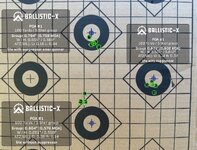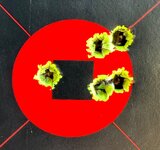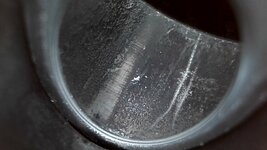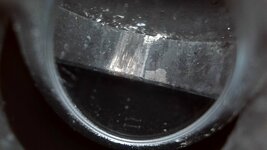I’ll start off by saying I am brand new to suppressors.
This winter I bought two suppressors for two different rifles.
First gun is a Seekins PH2 in 6.5 PRC that I stuck a TBAC Magnus on using the Area 419 Hellfire system. Going from a TiPro brake to the Magnus, I saw zero POI shift and my group size tightened up.
Took out the second gun today, which is a Ruger American GoWild in 6.5 CM. Has a Leupold Freedom CDS scope and (I think) Talley or Warne rings (I know, I know).
This gun/scope has been rock solid the last 4 years riding around in the truck and/or side by side, always held zero, and my son has taken deer from 100-430 yards with it. Last season I shot it at the beginning of the season to confirm it was still on and then put it away, as my son wanted to shoot the PRC.
My daughter is going to start hunting this year, so I added the suppressor, TBAC Ultra9 (6.5 cal) using the Hellfire system, and also added some weight to the buttstock via some steel rods wrapped in bubble wrap to heavy up the gun a little.
First shots today with the suppressor at 100 yards were about 1-2’ high and a couple feet to the right. Moved it in to 50 yards so I could get it back on paper at 100.
Next 4-shot group was all over the place:
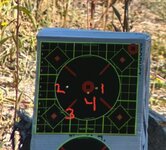
Let the gun/suppressor cool all the way down and shot another 3-shot group. Still bad, but not AS bad.
Let the gun/suppressor cool one more time, and at this point I was down to the last three rounds of ammo I had brought with me (wasted too many getting it back on paper at 100). Again, this group was better, but still not what I have come to expect from this gun:
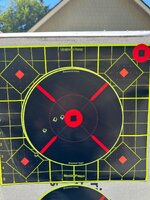
So, now I’m questioning is there something about the gun that doesn’t like the suppressor hanging off the end, or has my budget-friendly scope/ring combination finally given up the ghost? I made sure the suppressor was threaded on tight (as tight as I could get it with my bare hands) to eliminate that from the equation.
Just wondering if next best course of action is to try a different scope, or something else?
Picture of said gun:

This winter I bought two suppressors for two different rifles.
First gun is a Seekins PH2 in 6.5 PRC that I stuck a TBAC Magnus on using the Area 419 Hellfire system. Going from a TiPro brake to the Magnus, I saw zero POI shift and my group size tightened up.
Took out the second gun today, which is a Ruger American GoWild in 6.5 CM. Has a Leupold Freedom CDS scope and (I think) Talley or Warne rings (I know, I know).
This gun/scope has been rock solid the last 4 years riding around in the truck and/or side by side, always held zero, and my son has taken deer from 100-430 yards with it. Last season I shot it at the beginning of the season to confirm it was still on and then put it away, as my son wanted to shoot the PRC.
My daughter is going to start hunting this year, so I added the suppressor, TBAC Ultra9 (6.5 cal) using the Hellfire system, and also added some weight to the buttstock via some steel rods wrapped in bubble wrap to heavy up the gun a little.
First shots today with the suppressor at 100 yards were about 1-2’ high and a couple feet to the right. Moved it in to 50 yards so I could get it back on paper at 100.
Next 4-shot group was all over the place:

Let the gun/suppressor cool all the way down and shot another 3-shot group. Still bad, but not AS bad.
Let the gun/suppressor cool one more time, and at this point I was down to the last three rounds of ammo I had brought with me (wasted too many getting it back on paper at 100). Again, this group was better, but still not what I have come to expect from this gun:

So, now I’m questioning is there something about the gun that doesn’t like the suppressor hanging off the end, or has my budget-friendly scope/ring combination finally given up the ghost? I made sure the suppressor was threaded on tight (as tight as I could get it with my bare hands) to eliminate that from the equation.
Just wondering if next best course of action is to try a different scope, or something else?
Picture of said gun:


